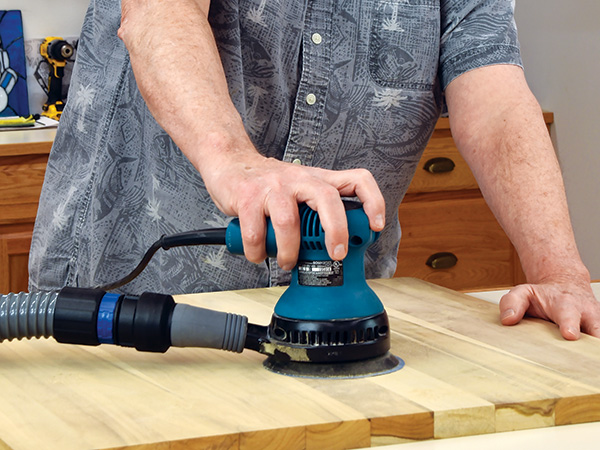
Everybody loves sanding! Oh, wait; I was thinking of ice cream. Sorry. Still, the analogy isn’t a bad one: If ice cream is the dessert that finishes up a good meal, sanding is the process that finishes — literally — all the combined efforts you put into a project. But, while my waistline may provide an argument against ice cream, sanding is an essential part of any project’s successful completion.
Meet the Sander Family
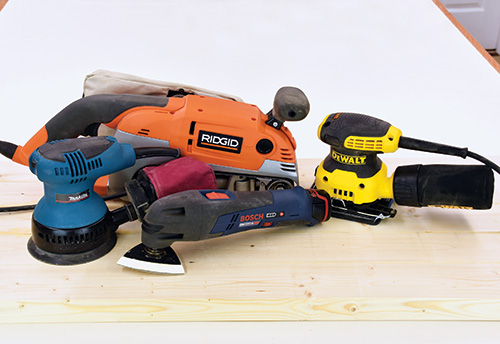
orbit sander, belt sander, quarter-sheet orbital sander, detail sander.
Sanders for woodworking come in a variety of types and sizes, including benchtop and stationary floor models, but the most useful handheld sanders boil down to four options. Not all sanders are suitable for all jobs, of course, with some better at certain tasks than others (and some disastrous if not used correctly).
1. Random orbit sanders, relative newcomers to the sanding party, have pretty much taken the lead among popular choices.
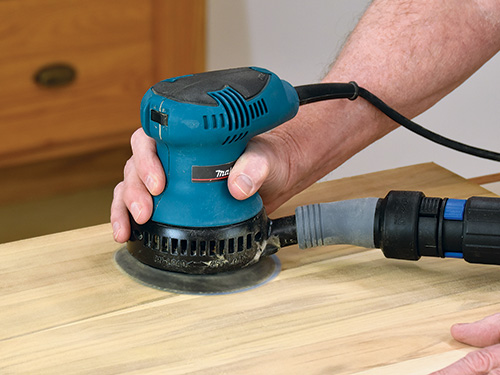
Sanders are designed to make a series of hundreds of thousands of scratches in a wood surface, each removing a tiny bit of stock. With single-action sanders like belt and traditional orbital sanders, those scratches are all the same orientation and are distractingly visible, especially under stain or clear finish.
But random orbit sanders (ROS) sand with two patterns — the pad oscillates in a circular motion, but also spins at varying speeds, depending on work surface, sanding speed, tool movement, etc. The result is a totally random arrangement where scratches “cancel” each other out, leaving mostly mark-free surfaces.
ROS sanders are generally lightweight, have good dust collection provided by internal impellers and use a host of available hook-and-loop sanding discs. Although ROS sanders come in several sizes, 5″ models are most useful.
2. Orbital sanders were once the most common finishing sander. These plain, square-pad orbital machines offered little beyond being faster than hand-sanding. They did the job, but their endlessly repeating orbital pattern often left swirls or “pig tails” behind.
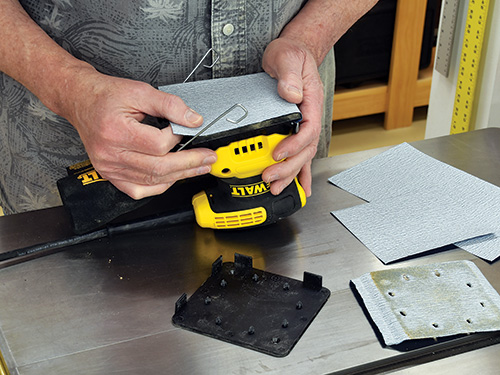
There weren’t many options, installing sandpaper was a pain and no one had even thought of dust collection yet. These old workhorses have largely been replaced by ROS machines, but they can still earn their keep. Lots of really old ones are still around — they almost never broke — but they’re not a good choice. On the other hand, modern versions have helpful improvements. Sandpaper size is universal, with most using a quarter sheet of sandpaper. Dust collection is standard on most, as are easier-to-use sandpaper mounting clips. Premium units off er variable speed, too.
Orbital sanders are less aggressive than ROS and belt sanders — a plus for finish- sanding.
3. Belt sanders are even more old-school. These beasts of the sanding world are unsuited for finish work, and many woodworkers don’t even own one. Still, if you glue up a lot of panels and tabletops and don’t have access to a large wide-belt, industrial-size sander, they can be worth their (considerable) weight in gold.
We’ll cover more on belt sander use directly, but in short, there’s no better sander for leveling panels or simply removing lots of stock quickly.
4. Detail sanders occupy a special niche. With smaller pads typically in a triangular shape, they don’t remove a lot of stock. On the other hand, they can fit where few other sanders or even a sanding block can go. Corners, slots, mortises and lap joints are all fair game.
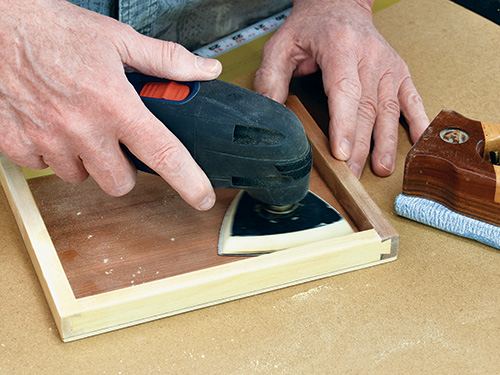
Some detail sanders offer swap-out pads in various- shaped profiles that are ideal for contour sanding on molding, coves and the like. Many woodworkers get the same job done using an oscillating multitool with a sanding pad attachment.





